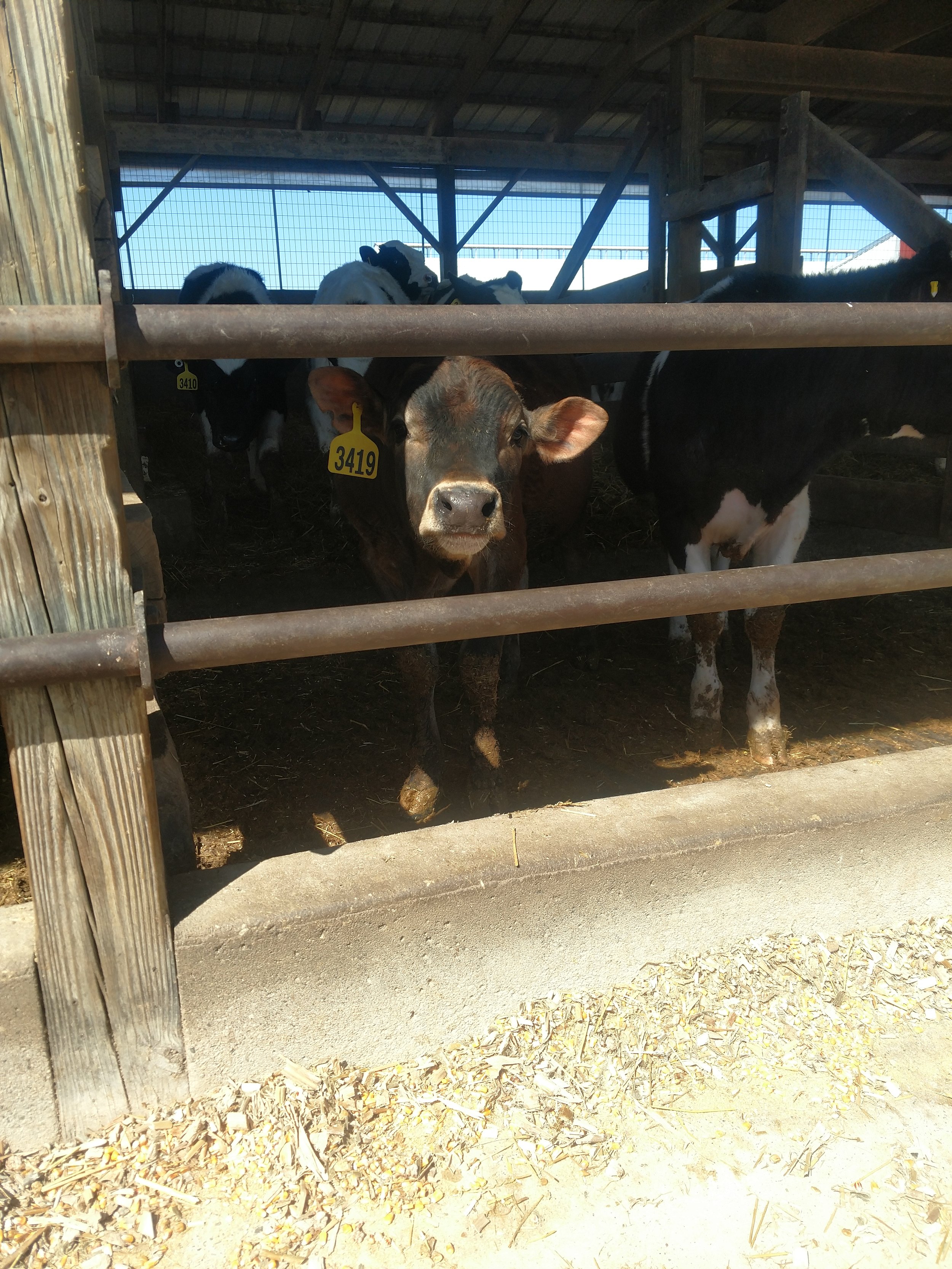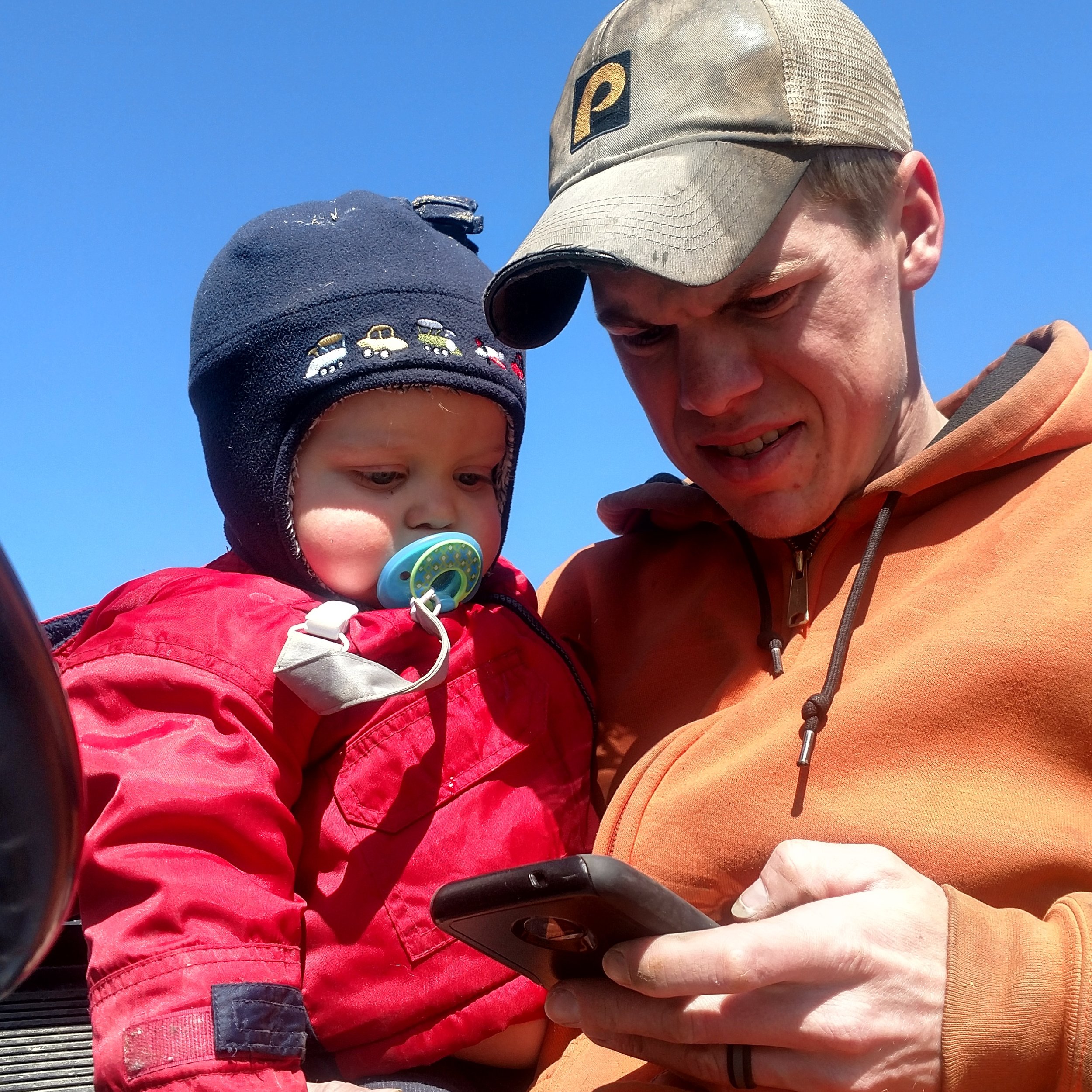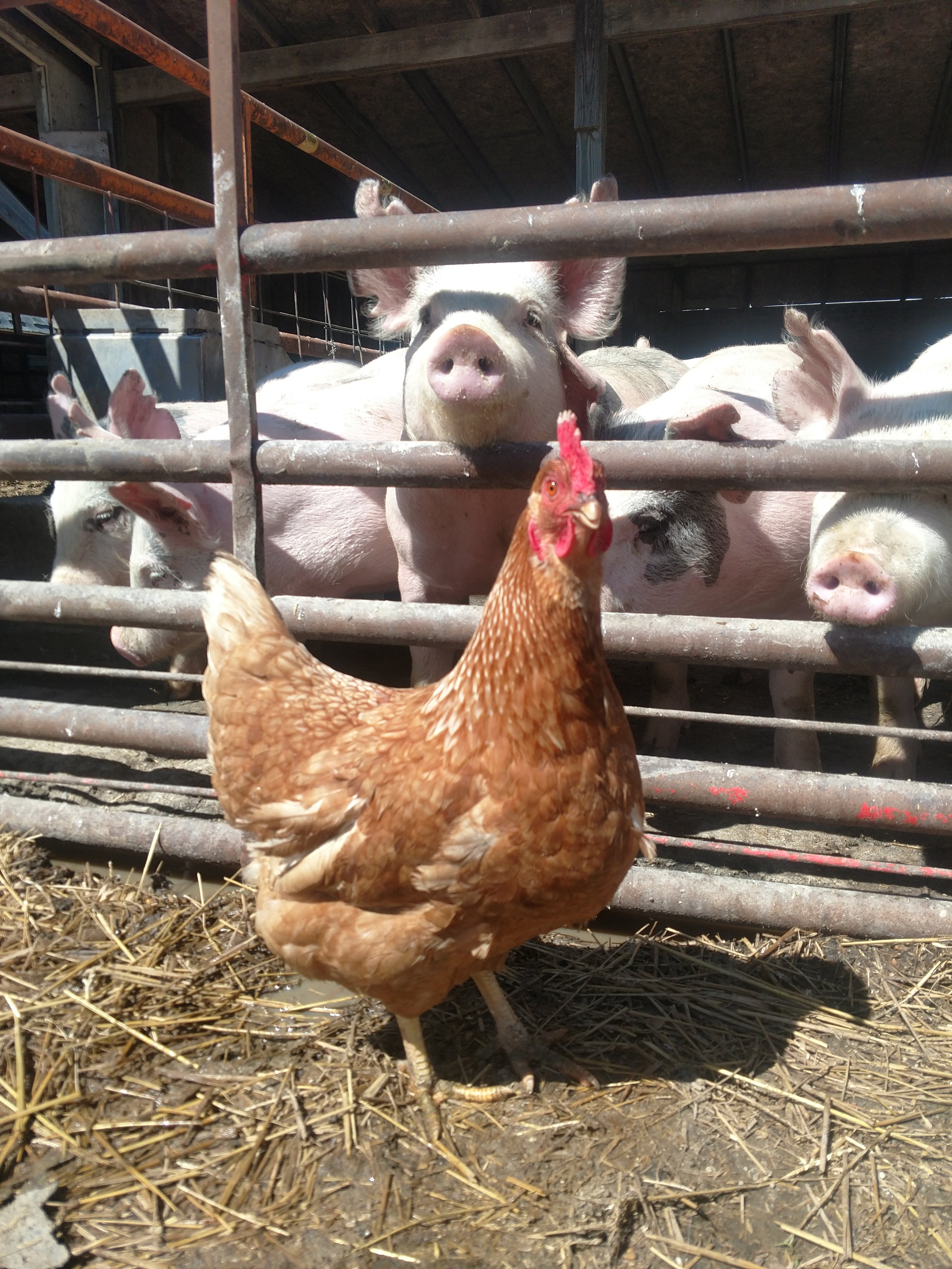Managing 700 Cattle With 2 People
When people ask us what we do for a living they are intrigued when we say feeding cattle and often very surprised when we tell them the number of cattle we feed. We can fit approximately 700 cattle on our feedlot and we strive for our pens to be full at all times so we often float pretty close to 700 cattle on feed. This can seem like a huge number of cattle for only two people to take care of but the truth is it really isn't too difficult!
It takes no time at all to feed each barn!
Technology
The biggest contributor to our ability to feed 700 cattle with only 2 people is technology. Our mixer wagon allows us to deliver feed to pens of cattle within minutes and our loader tractor, with its custom-made extra-large bucket, allows us to move large quantities of feed ingredients in no time at all with minimal human effort. This is a huge jump from pitching hay with a pitchfork and shoveling grain into buckets that our "cattle feeding forefathers" had to do each day. Chores alone take at least 3 hours a day and when you divide that over 700 head, we're only spending 15.4 seconds feeding each steer! That's absolutely amazing!
Increased Safety and Ability to be Hands-On
This guy is happy we have a squeeze chute so we don't have to lay him down to catch him!
At one point in history, the modern squeeze chute did not exist. You caught cattle by roping them, trapping them behind gates, or by hand and laying them down. If a big enough steer was determined enough not to be caught, he probably was never touched by human hands. Through the invention of the modern squeeze chute and headgate and the ways in which we use them, we can now catch cattle safely and in a fraction of the time that we were ever able to before. If we are running cattle through the chute for their normal vaccine and implant protocol, just the two of us can easily work 40 head an hour on average. Theoretically, we could put the whole feedlot through the chute in two 9-hour days if we ever needed to.
High-Tech Technology!
We also use a fair deal of digital technology on the farm. Tractors are smarter than they ever were before (though we don't own any super smart tractors one day we hope to!) and we use two different set of scales to keep everything running smoothly. We have scales on our mixer wagon to ensure that each batch of feed is always composed of the same amount of each ingredient as it was the day before (vital for nutrition) and scales under our squeeze chute to weigh each steer. We keep a running log of each steer's weight in a giant Excel spreadsheet and we log what feed we used and in what quantities in an equally huge Excel spreadsheet.
Re-figuring rations, checking the weather, looking at markets, the uses for technology are literally endless.
Herd Management is Down to a Science
This data, allows us to keep track of each, individual steer. We can tell you the date that steer stepped off the trailer, what vaccines he's had, when he was implanted last, what (if any) antibiotics he needed, how much he weighed at a certain date, how many pounds he gained per day, how much feed he consumed, and when he'll be ready to leave the feedlot. This data also allows us to compose close-out sheets for each group of fats that leave the farm so we know exactly how well, or not, they performed. These close-outs are really the key for us to be able to know specifically what we need to do with the next group to improve their performance and care so that they do better than their predecessors.
Everyone Benefits!
The pigs (and 2 hens) also benefit from technology, though not to the same degree as the cattle do because we only have a few.
So yes, time management and hours worked do allow the pair of us to manage 700 cattle by ourselves but nothing has changed the way we feed cattle more than technology. Technology has allowed us to do things in ways that previous generations have only dreamed of. We can feed for individual nutrients, we have to ability to analyze our feed down to the micronutrient, we can vaccinate and treat with more efficient drugs that work better than they've ever worked before. Technology has always shaped the future and the cattle feeding industry is no different than any other industry in that sense. At the end of the day, the best thing about advancements in technology is that our animals benefit even more than we do. We are able to provide our cattle with the highest possible quality of life so that they are happier and healthier than ever before and, the truth is, that's what really matters!




